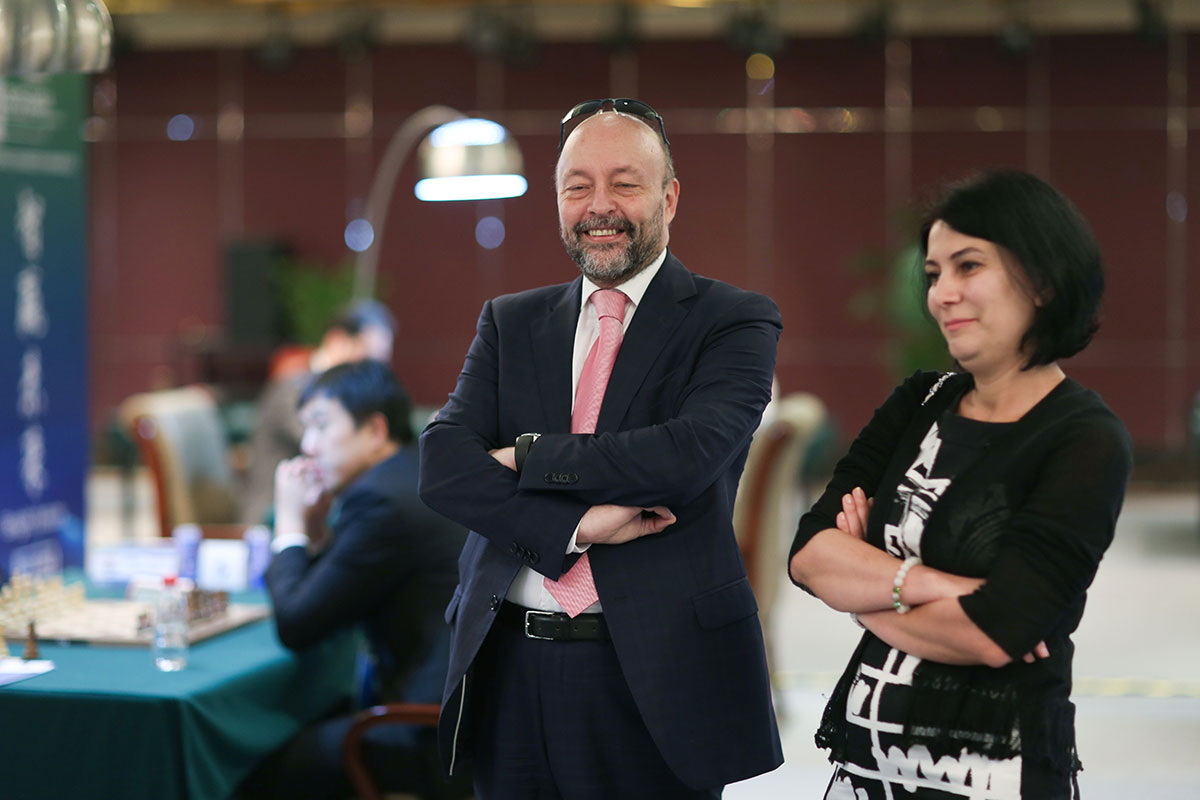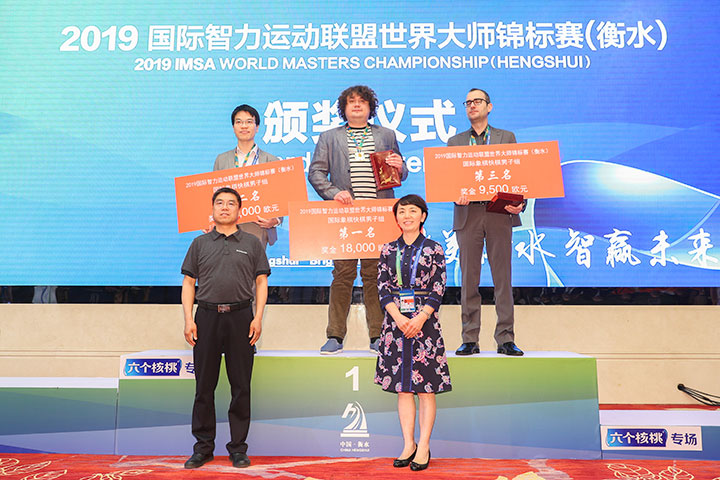What's in a name? A lot, actually
IMSA (International Mind Sports Association) was founded in 2005, during the GAISF (then General Association of Sport Federations) annual convention. IMSA’s goals include to “further realize the inclusion of mind sports in the Olympic movement...and [to run] the World Mind Sports Games on the same lines as the Olympics.”
The IOC (International Olympic Committee) requires that “all new sports to be included in the Games must contain women’s events.” Most Olympic sports have separate events for men and women and there are mixed gender events too. For example, the existing Olympic sport of curling (also known as “chess on ice”) has a men’s event, a women’s event, and a doubles event.
The FIDE site for the 2019 IMSA World Masters tournament sometimes used the term “Open” for the IMSA “Men’s” section. The Executive Director of IMSA, Geoffrey Borg, emailed this explanation, “IMSA follows IOC and GAISF norms for events. It is Men and Women events. Presumably, FIDE adopted its normal terminology but officially it is Men and Women events.”

Geoffrey Borg, IMSA Executive Director from Malta | Photo: hengshui2019.fide.com
Currently, FIDE-organized events use the term “Open” rather than “Men’s.” Historically, FIDE events had “Men’s” sections. The Open Olympiad was the Men’s Olympiad. The World Youth Chess Championship had “Boys” and “Girls” sections, now renamed “Open” and “Girls.” As recently as 2018, TASS (Russian News Agency) referred to the World Chess Championship as the Men’s World Chess Championship. The FIDE name changes from “Men” or “Boys” to “Open” happened after girls and women won, qualified for, or competed in these tournaments. Some examples: Judit Polgár winning the “Under 14 Boys” in 1990. Susan Polgár qualifying for the “Men’s” World Championship cycle in 1986. Pia Cramling playing for the Swedish “Men’s” team at the Olympiad.

The US Chess Federation (US Chess) does not use the terms “Men” or “Boys” for events that it organizes, though individual organizers run US Chess-rated boys-only tournaments. Daniel Lucas, Senior Director of Strategic Communication for US Chess (pictured), emailed:
US Chess has no men-only or boys-only events because US Chess seeks to be inclusive. Because the percentage of women and girls playing is so low as compared to males, we do have women-only and girls-only events both because we are seeking to increase the numbers of females in chess and because women and girls tell us they like these events.
An “Open” is inclusive, accommodating those who do not identify as men or women. The IOC struggles to classify those individuals.
The most recently-added US Chess national events were “Open” to men and women, though restricted to the best players ages 50 and older. When US Chess added these “Open” events, it did not add corresponding women’s events. As discussed in my article "Golden Age of US Chess, for players ages 50 and older", those having the chess accomplishments (high chess ratings, state championships) to qualify for these newly-added “Open” events are all men. Had these new events been named as “Men’s,” establishing corresponding “Women’s” events might be seen as supporting gender balancing in chess.
Six months before she was named Women’s Program Director for US Chess, Jennifer Shahade wrote, “The US Chess Women initiative aims to bring female membership to 50%, with a short-term goal of 25%. Currently, the number is 14%, up from 10% nine years ago.” [Emphasis original.]
I asked FIDE’s Chief Communications Officer David Llada, “What is the goal for the percentage of women among FIDE-rated players, the methods to achieve that goal, and where is FIDE at now with regard to that women’s participation goal?” Llada replied, “Judit Polgár recently joined FIDE as honorary Vice-President. On May 1, she came to Moscow for a meeting with FIDE President Arkady Dvorkovich, where they were discussing this and other matters. Later on she also held a separate meeting with me, to discuss how to promote Women’s chess and make our game more attractive to girls, and how to communicate this. She expects a strong statement from the FIDE President, and he is ready to take strong initiatives soon. His support to the Women’s World Championship cycle has been already a firm step.”
For international and national events organized by FIDE and US Chess, participants that meet “Open” qualifying standards are almost exclusively men and boys. The 2019 Worldchess/FIDE Grand Prix series features 22 players of the best players in the world, all men. Funded either by US Chess or by sponsors, in 2018-2019 the US Chess Senior Team, the U.S. Senior Championship, and the National Tournament of State Senior Champions, all for ages 50 and over, are 100% men and 0% women. The 2019 U.S. Cadet (Invitational) Championship, for under age 16, will have seven boys and one girl. The organizer gave its “Wild Card” invite to Rochelle Wu. None of those teams or tournaments has a funded “Women” or “Girls” counterpart in 2018-2019, though FIDE plans a 2019-2020 Women’s Grand Prix series.
A funded event is more economically attractive to players than a non-funded event which recycles players’ entry fees as prizes. “Funded” means that there is a source of funding other than players’ entry fees. In funded events, players’ expenses are covered or they may win money that offsets their expenses or allows them to make a profit. Would funded “Women” or “Girls” events enable female chess players to compete more often? Would funded “Mixed Gender” events, like the doubles event in the sport of curling, promote women in chess?
Asking such questions is important, if gender balance in chess is important. The article (Why) are men better chess players than women? noted, “female players drop out earlier from tournament chess than males do” without suggesting that funded events that might affect the drop-out rate. Additionally, funded events might lure women who are not currently active in chess to play again. Last, funded events might create more female chess role models, through media coverage. That media impact could be far-reaching, just as the Olympic Games inspire us to try sports, or at least to become fans and supporters of sports and athletes.
Perhaps FIDE and US Chess will match the IOC’s commitment to gender equality. The IOC promotes “gender equality in terms of balancing the total number of athletes participating at the Games.” By structuring Men’s, Women’s, and Mixed Gender events, the IOC has almost achieved that goal. 41% of the athletes at the 2018 Winter Games were women.
Acknowledgement: My thanks to US Chess Digital Editor John Hartmann, who alerted me to the “Men’s” section of the 2019 IMSA World Masters tournament.

























